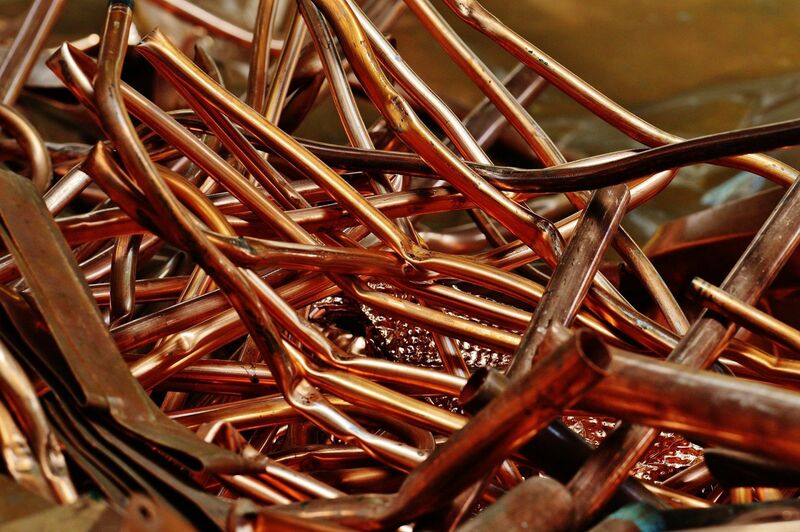 |
 |
|
Lincolnland Agri-Energy, LLC
Corn Delivery
Distillers Grains
Ethanol
Co-op Members
About Lincolnland
Weather
Market Data
News & Commentary
Links
Vendors & Contractors
Site Admin
|
Here's How to Buy the Dip in Copper Prices
The year 2024 has delivered a remarkable surge in copper prices (HGN24), with the red metal reaching new highs, and posting an impressive 15% year-to-date gain as of mid-June. This price rally has outpaced even the notable year-to-date performance of gold, as supply disruptions - including recent mine closures, declining ore grades, and a ban on Russian metal deliveries - have tightened the global copper market. This has prompted major banks like Citi to declare the start of a new secular bull market in copper, with price forecasts as high as $12,000 per metric ton by 2026. Meanwhile, Andurand Capital is calling for copper at $40,000. Notably, Trafigura predicts that artificial intelligence (AI) and data centers alone could add an extra 1 million metric tons to copper demand by 2030, exacerbating an already projected 4-5 million ton supply deficit. However, even Trafigura doesn't think the extent of copper's current price surge is justified by market fundamentals. Likewise, Citi sees some near-term consolidation as likely, but believes sub-$9,500/ton copper is an attractive buying opportunity for bullish investors and consumers, given the resilient end-use demand. Copper Price Outlook: Near-Term Consolidation and Long-Term DemandSeveral factors are driving this expected consolidation. Supply disruptions, like the closure of First Quantum Minerals' Cobre Panama mine, along with production cuts from major players like Anglo-American (NGLOY), have tightened the copper market. Additionally, Chinese smelters are cutting production due to lower treatment and refining charges, which is expected to further squeeze the supply of refined copper. Looking ahead, the long-term demand outlook for copper remains very bullish. The global push towards decarbonization and green technologies is set to drive significant demand. Electric vehicles (EVs), renewable energy infrastructure, and the AI sector all require copper to keep growing. For example, an electric vehicle uses about 78 kg of copper, compared to just 22 kg for a conventional car. An offshore wind turbine contains about 8 tonnes of copper per megawatt of generation capacity. Analysts at Goldman Sachs (GS) predict copper prices could reach $12,000 per ton even sooner than Citi - by the end of 2024 - and climb to $15,000 per ton by 2025, driven by strong demand and ongoing supply constraints. In other words, the current market dynamics suggest that while prices may consolidate in the short run, the long-term demand drivers remain robust. This makes strategic entry points, like the sub-$9,500 per ton level suggested by Citi, particularly attractive for those with a bullish outlook on copper. For investors looking to capitalize on this "inevitable" copper boom, as dubbed by RJO Futures strategist John Caruso, one option for prospective dip-buyers is the United States Copper Index Fund (CPER), an ETF that tracks copper futures contracts. The CPER ETF: A Potential Play on Copper StrengthThe United States Copper Index Fund (CPER) is a unique investment vehicle that provides exposure to the copper market. Structured as a limited partnership, CPER holds copper futures contracts, offering investors a way to gain exposure to the metal without the hassle of physical storage or delivery. This structure also means there is no associated credit risk, providing peace of mind for investors. Specifically, CPER attempts to track copper prices through a mix of near-term futures contracts, along with cash, cash equivalents, and Treasuries. The specific blend of contracts is selected to minimize the impact of contango and backwardation. CPER has been on a roll lately, up 14.7% YTD. Along with the red metal, the ETF has pulled back about 12% from its late-May highs, providing an opportunity to pick up shares on the dip. 
However, investing in CPER comes with a price tag. The fund has a management fee of 0.88%, an annual charge by the sponsor, United States Commodity Funds, LLC, for managing the fund's investments. The total expense ratio, which includes the management fee and other operating costs, stands at 0.97%. While these fees may seem high, they are in line with the costs associated with managing a specialized fund like CPER. The fund's assets under management (AUM) have been steadily growing, and now total $223.5 million. CPER's trading volume has also been on the rise, with average daily volume of 316,923 shares - up from a 5-digit daily average one year ago. So if you're feeling bullish on copper and want to make the most of the dip - without taking on risks specific to any one miner, region, or company - the CPER ETF could be your ticket to the party. With its ability to track copper futures and provide exposure to the metal's potential upside, CPER could be the perfect way to capitalize on the red metal's long-term growth story. With copper demand expected to soar due to decarbonization efforts, industrial migration, and the rise of EVs, now might be the ideal time to jump on the CPER train. On the date of publication, Ebube Jones did not have (either directly or indirectly) positions in any of the securities mentioned in this article. All information and data in this article is solely for informational purposes. For more information please view the Barchart Disclosure Policy here. |
|
|